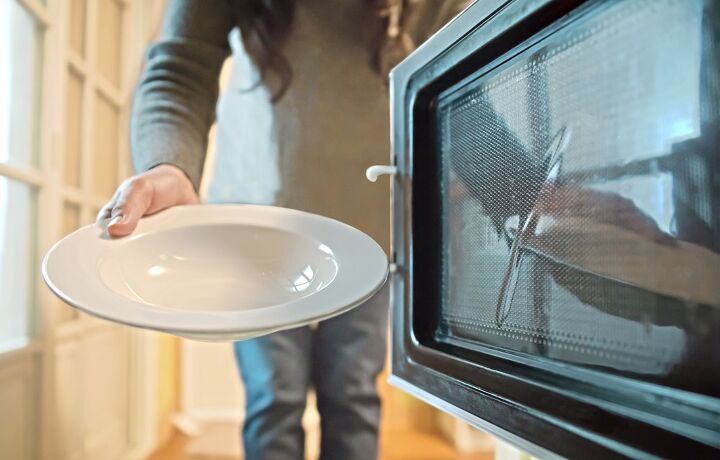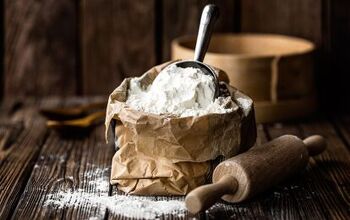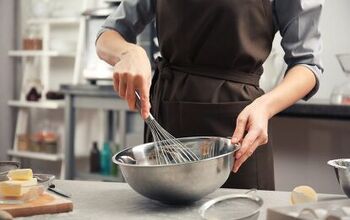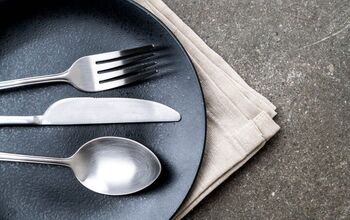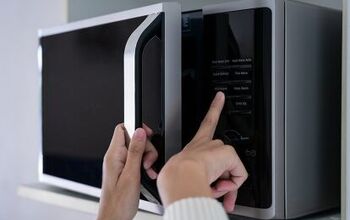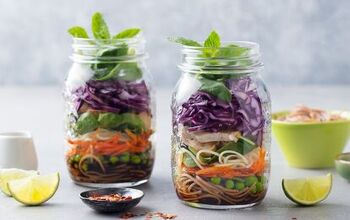Can You Put Bone China In The Microwave? (Find Out Now!)

Bone china dishes have a unique, milky white quality to them. You can see light and shadows through their thin material and their unique designs show off nicely in a china cabinet. Naturally, we’re afraid to use them too harshly because they look so lightweight and delicate. However, if our tea cools off before we get around to drinking it, can we reheat a bone china teacup in the microwave?
Although bone china has the reputation for being delicate, don’t let its translucence fool you! Bone china is known as the king of porcelain because it is one of the most durable types of dishware around. As long as your bone china does not have any gold or metal accents it should be microwave-safe and dishwasher-safe. Some porcelain brands even vouch for using bone china in the oven!
Here are some surprising facts about bone china that may make you want to take Grandma’s dishes out of the china cabinet and start using them!
How is Bone China Made?
My grandparents went to meet an English friend who was living in Canada one summer and brought me back a tiny bone china teacup. For years, I had the mistaken impression that bone china was somehow carved out of bone. Although I was a bit off in my childhood assumption, traditionally, bone china does contain bones in its makeup.
The Bone Content
Bone china is made from china stone and china clay, with bone ash, added to the mix. The more bone content the dish contains, the thinner, smoother, and sturdier it will be. Most often, this ash is from cow bones. This porcelain mix does not contain lead and there may actually be some health benefits to drinking out of bone china.
The Minimum National Standards for Bone China
New mass-produced bone china does not always contain bone ash. However, to be considered true fine bone china, countries have set standards for the minimum amount of bone ash the porcelain should contain.
In China, the porcelain should contain at least 36% bone ash to reach the national standard. The U.K. requires 30%, while the U.S.A.’s minimum is 25%. Some of the highest quality bone china can contain up to 50% bone ash.
How Heat-Resistant is Bone China?
Bone china is fired 2-5 times whereas porcelain may only be fired 1 time. The high temperatures in the kiln make bone china very heat-resistant. However, you will want to make sure that your bone china does not experience drastic changes in temperature.
If you take a bone china teacup from the fridge and blast it in the microwave at high heat, this strong teacup could crack just like any other ceramic mug or heat-resistant glass could. Bone china will be more expensive to replace, though.
Besides being heat-resistant, some other characteristics of bone china include:
- Crack-resistant
- Chip-resistant
- Translucent
- Creamy white color
- Microwave-safe
- Dishwasher-safe
Wedgewood even claims that bone china can be oven-safe! Let’s not get crazy, though… I think Wedgewood would agree that there is a big difference between “can” and “should.”
While you may decide to heat your bone china in the microwave, you will not want to heat it up more than 100 degrees in either the microwave or the oven. Although technically you may be able to get away with heating bone china in a low-temp oven, you may discolor your china or the design on your dish by doing so.
How Does Bone China Compare to Porcelain?
You know the old phrase “Anything you can do, I can do better?” This is basically bone china’s answer to porcelain.
Both bone china and porcelain have basically the same make-up. However, bone china has the bone ash component and undergoes a more intensive kiln-firing than regular porcelain. This process makes bone china pieces thinner and softer, but at the same time more resistant to heat and breakage. It may seem contradictory for a piece to be softer and also stronger at the same time, but in the case of bone china, both things are true!
Bone china is much stronger than many realize. You may experience less accidental breakage with bone china than you would with an everyday ceramic dish. However, many of our bone china pieces have been passed down through the years which gives them a sentimental value beyond their intrinsic value. This sentimental attachment may often prevent us from testing out the strength of our bone china pieces on a daily basis.
How to Care for Bone China
So, now that we’ve taken a look at how surprisingly durable bone china is, here are some tips for taking care of these dishes:
- Use mild detergents and a soft washcloth for handwashing.
- If you use the dishwasher, wash bone china on the top rack keeping space between the dishes.
- When putting your dishes away, you can place a thin piece of foam or a soft cloth between your dishes to protect their patterns from becoming scratched.
- When heating bone china, make sure you are not exposing it to drastic temperature changes.
- Never put bone china over an open flame.
- Make sure you don’t heat bone china over 100 degrees.
Related Questions
Can you pour boiling water into Bone China?
Bone china and fine porcelain china can resist hot temperatures and are pretty hardy for their delicate look. However, extreme temperature changes can cause these pieces to crack. Make sure you never pour boiling water into a cold piece of china.
How do I know if a dish is microwave-safe?
If a dish says it is microwave-safe it makes our life easier. However, some dishes (especially older ones) don’t say either way. Or, if they did say, the label has long since rubbed off. You can test a dish to see if you can safely microwave it. Heat water in a cup or dish for one minute. If your dish remains cool while the water is hot, this is a good sign that this piece is microwave-safe.
How can I get rid of coffee stains on my mugs?
Coffee is delicious but it can leave behind ugly marks on china mugs. To get rid of the stains, you can make a paste out of baking soda and water. Wipe this mixture over the stained areas to remove the discoloration from your china or porcelain. You don’t want to be overzealous with this mixture around any designs or metal trim, however.

Alex Praytor is a native Texan who got her degree in English Literature and decided to travel the globe. She finds the architecture and design of homes across cultures fascinating. In her spare time, she visits coffee shops with her family and creates projects for their own home. Alex enjoys sharing tips on how to keep repairs up to date while turning a house into a home.
More by Alex Praytor



